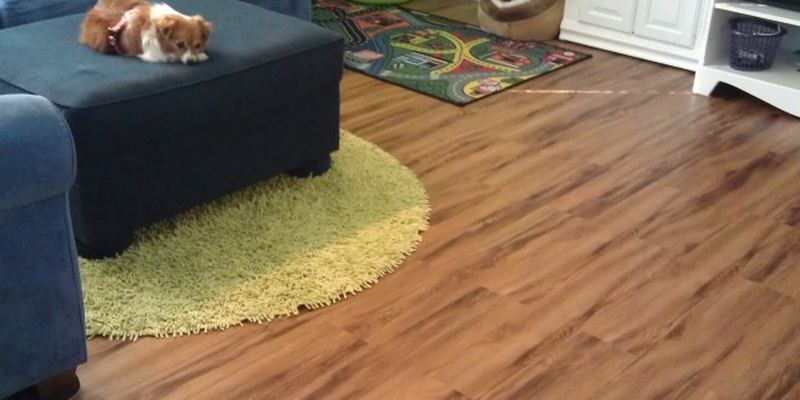Vinyl flooring has been a popular flooring choice in America for many years, and it still accounts for around 15 percent of annual flooring expenditures in the country. When most people talk about vinyl flooring they're usually thinking about sheet flooring. However, there are other forms of flooring made from vinyl, such as tiles and planks. Since they're all are made from vinyl they share a number of common characteristics and have many of the same advantages and disadvantages.

Part 1
Advantages
Affordability - Vinyl's primary advantage is its affordability. While it can emulate high-end flooring in appearance, vinyl flooring is relatively inexpensive and can be installed for as little as $5 per square foot.
Wide Color Choice - All vinyl flooring is available in a wide range of colors, making it adaptable and easy to fit into almost any decor.
Quick and Easy Installation - Available in tiles and planks as well as sheets, it's easy to install. The tiles usually come in 12-inch squares, so they're easy to handle and both the tile and planks are often manufactured with "peel and stick" backings, meaning they're easy for homeowners to put down themselves (saving money on professional installation).
Moisture Resistance - Vinyl flooring is totally waterproof, so it can be used virtually anywhere in the home including the main floor, upper floors and below grade. It works particularly well in bathrooms and kitchens, where water often ends up on the floor.
Easy Cleanup - Water simply beads on the surface, making it easy to mop up. Plus, regular sweeping and an occasional damp mopping are all that's required to keep a vinyl floor clean and bright.
Durability - Most vinyl flooring has a "wear layer" (sometimes up to three) on top of the vinyl itself, so it's resistant to normal traffic wear.
Comfort - Vinyl is a "resilient" flooring, meaning it's soft texture has a little "give" when you walk on it, making it a good working floor you can stand on for hours.
Disadvantages
Petroleum Product - Vinyl is made from petroleum, so from an environmental perspective because it's made from a non-renewable resource it's a bad product.
No Resurfacing - While the wear layer is designed to protect the flooring, after a few years of traffic the surface will start to show scuffing and signs of wear. Unlike wood, the vinyl floor can't have a new finish applied.
Color Fade - Vinyl can't stand up to ultra violet rays so under prolonged exposure to sunlight the patterns and colors in a vinyl floor will start to fade.
Difficult or Impossible Repairs - While vinyl is durable, if it does get damaged it's hard to patch. A vinyl tile or plank can be removed and a new one installed, but a sheet vinyl floor needs to be replaced.
Surface Irregularities - Over time some vinyl floors develop bumps or curls at the edges or along the seams.

View All Comments /Add Comment